Sydney Harbour Bridge is 85 and Downies have gold and silver coins to celebrate
Eighty-five years old this year, Sydney Harbour Bridge has become an absolute icon of this vibrant Australian city. The scene of one of the most famous New Year celebrations held every year, the bridge is well known far outside of the country, an indelible part of this relatively young states national identity (along with Fosters). The bridge itself is a large version of its type, and while not likely to win any outright beauty awards, it has character in spades.
There have been a few coins depicting the bridge in recent years like the annual Royal Australian Mint New Year coin and Downies own recent Submarine Attack coin which we liked, but this one is a bit more ambitious. The design focuses on the bridge of course, and is a composite of that and several other famous elements of this popular city, including the Sydney Opera House. The format is bigger though, a choice between a two-ounce fine silver coin and a one-ounce fine gold.
Below: images are the harbour before, during and just after construction of the bridge.
The silver coin has the advantage of being struck to a high-relief and looking at the layers of Sydney structures depicted on the coin, this could be a huge advantage in giving the artwork the sense of depth and perspective it seems to crave. We’ve obviously only got these official images to go with at present, but the silver does seem to exhibit a more impressive rendition, even though the actual design is identical across the two versions.
The gold is limited to just 150 pieces, even the silver only hitting 850 units maximium, and with this city being so popular, we can see the coin being equally so. The obverse has the usual effigy of Queen Elizabeth II on it, the well known Ian Rank Broadley version, and we’ve no reason to think the strike won’t be of the highest order, undertaken as it is by the German masters at BH Mayer, undoubtedly one of the best in the industry.
Packaging looks up to scratch, both appearing of a high quality with the gold having a little more exclusivity, only to be expected given the price differential. On that front, the silver will sell for $249.00 and the gold for $2995, both in Australian dollars. Both have been available for a while and are well worth seeking out if the subject matter appeals.
SYDNEY HARBOUR BRIDGE
The Sydney Harbour Bridge (SHB) is a steel through arch bridge across Sydney Harbour that carries rail, vehicles and pedestrians between the Sydney central business district (CBD) and the North Shore. Nicknamed “The Coathanger”, the design was influenced by the Hell Gate Bridge in New York City, although SHB is far larger. Built by British firm Dorman Long and Co Ltd of Middlesbrough, the bridge was formally opened on Saturday, 19 March 1932 with estimates suggesting that between 300,000 and one million people took part in the opening festivities.
It is the sixth longest spanning-arch bridge in the world and the tallest steel arch bridge, measuring 134 m from top to water level. It was also the world’s widest long-span bridge, at 48.8 m wide, until construction of the new Port Mann Bridge in Vancouver was completed in 2012. The main span is 503m long and the SBH has a total length of 1,149 m. The total weight of the steelwork of the bridge, including the arch and approach spans, is 52,800 tonnes, with the arch itself weighing 39,000 tonnes. The bridge itself was regarded as a triumph over Depression times, earning the nickname “the Iron Lung”, as it kept many Depression-era workers employed.
The official ceremony to mark the “turning of the first sod” occurred on 28 July 1923, on the spot at Milsons Point on the north shore where two workshops to assist in building the bridge were to be constructed. Arch construction itself began on 26 October 1928. The southern end of the bridge was worked on ahead of the northern end, to detect any errors and to help with alignment. The cranes would “creep” along the arches as they were constructed, eventually meeting up in the middle. In less than two years, on Tuesday, 19 August 1930, the two halves of the arch touched for the first time. Workers riveted both top and bottom sections of the arch together, and the arch became self-supporting, allowing the support cables to be removed. The last stone of the north-west pylon was set in place on 15 January 1932, and the timber towers used to support the cranes were removed.
The standards of industrial safety during construction were poor by today’s standards. Sixteen workers died during construction, but surprisingly only two from falling off the bridge. The total financial cost of the bridge was AU£6.25 million, which was not paid off in full until 1988. (Source: Wikipedia)
SPECIFICATIONS
| NAME | 2017 SYDNEY 85TH SILVER | 2017 SYDNEY 85TH GOLD |
| DENOMINATION | $5 New Zealand | €50 Euro |
| COMPOSITION | 0.999 silver | 0.9999 gold |
| WEIGHT | 62.2 grams | 31.1 g |
| DIAMETER | 55.00 mm | 40.00 mm |
| FINISH | Proof | Proof |
| MODIFICATIONS | High relief | None |
| MINTAGE | 850 | 150 |
| BOX / COA | Yes / Yes | Yes / Yes |


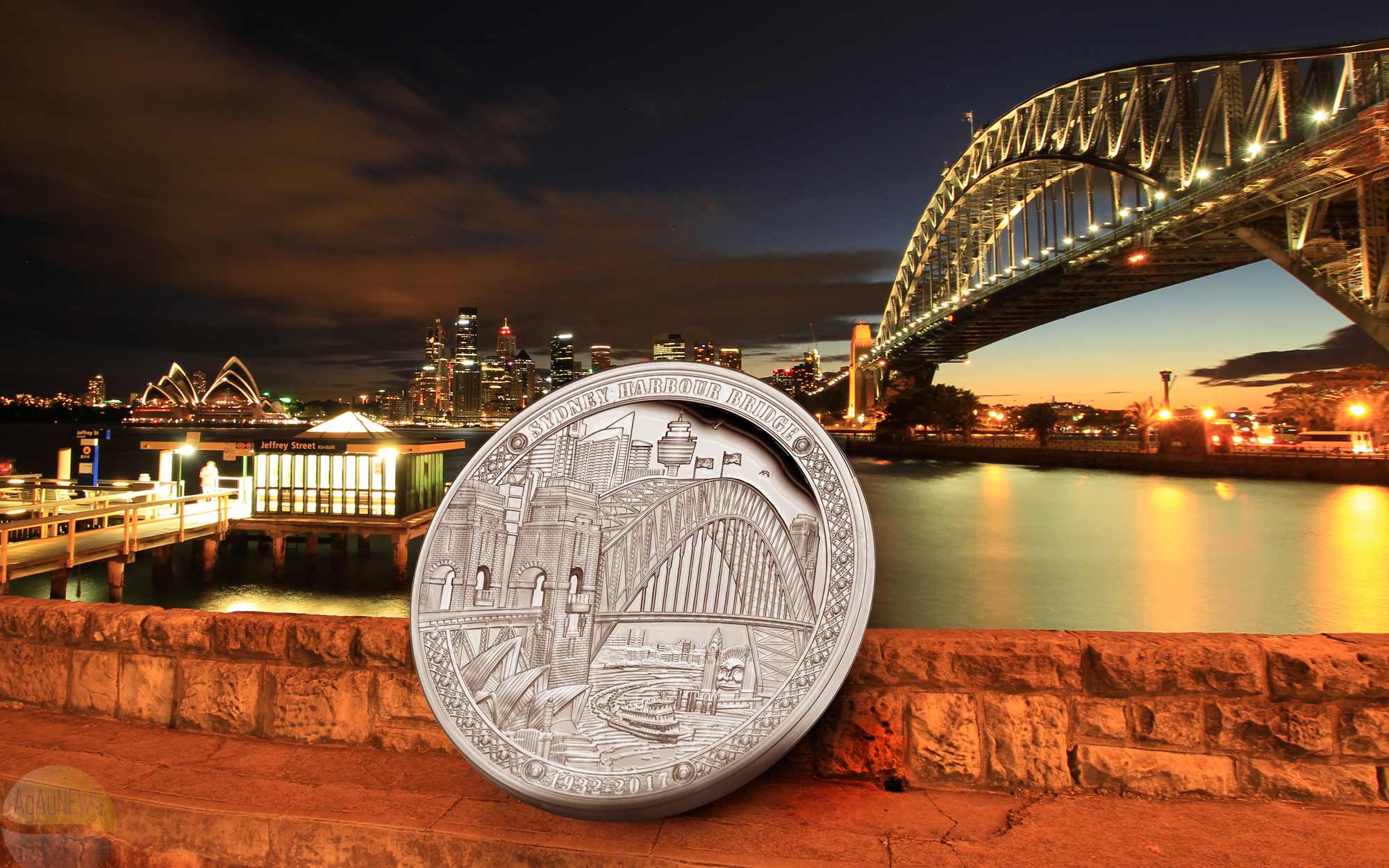
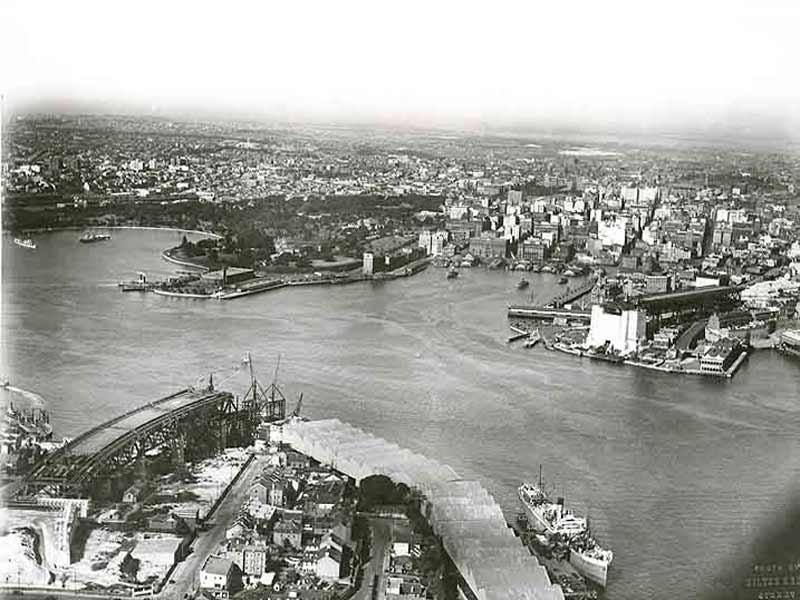
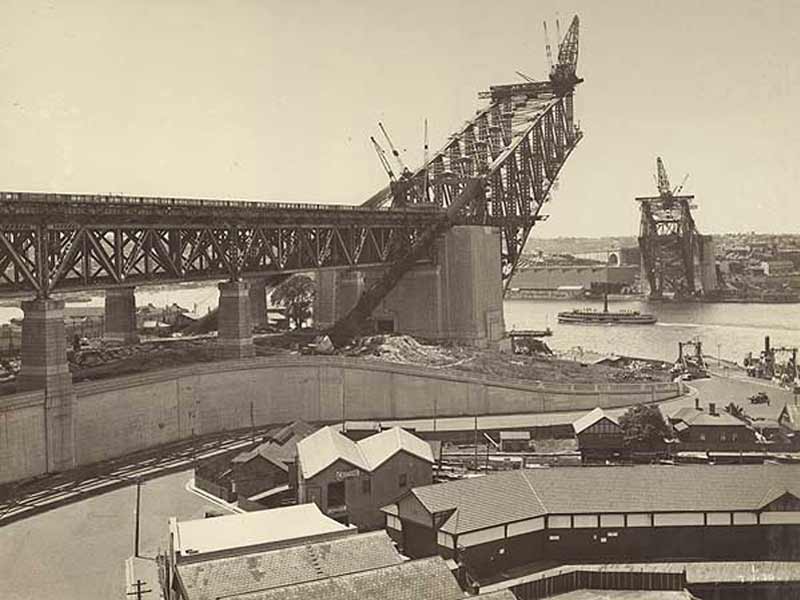

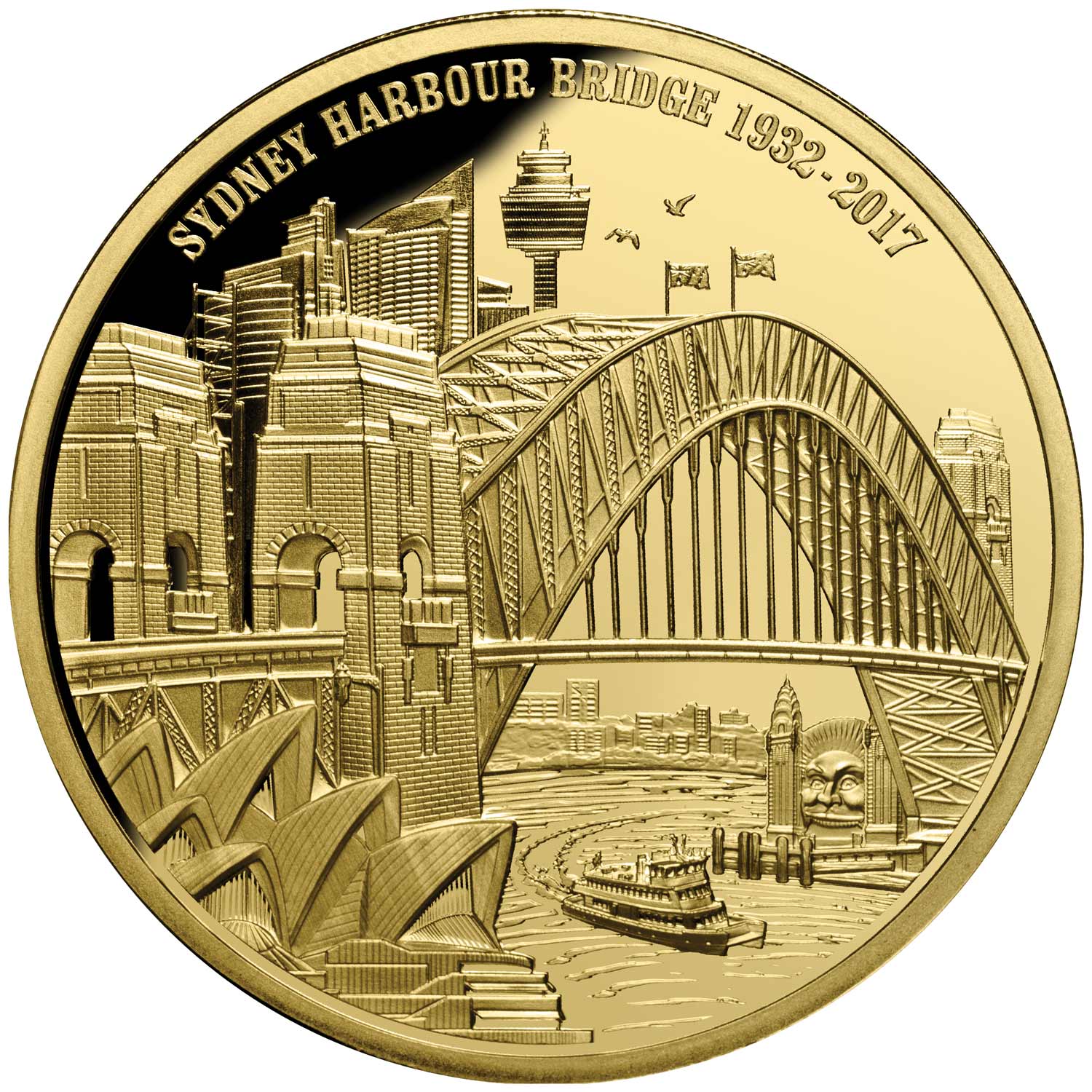
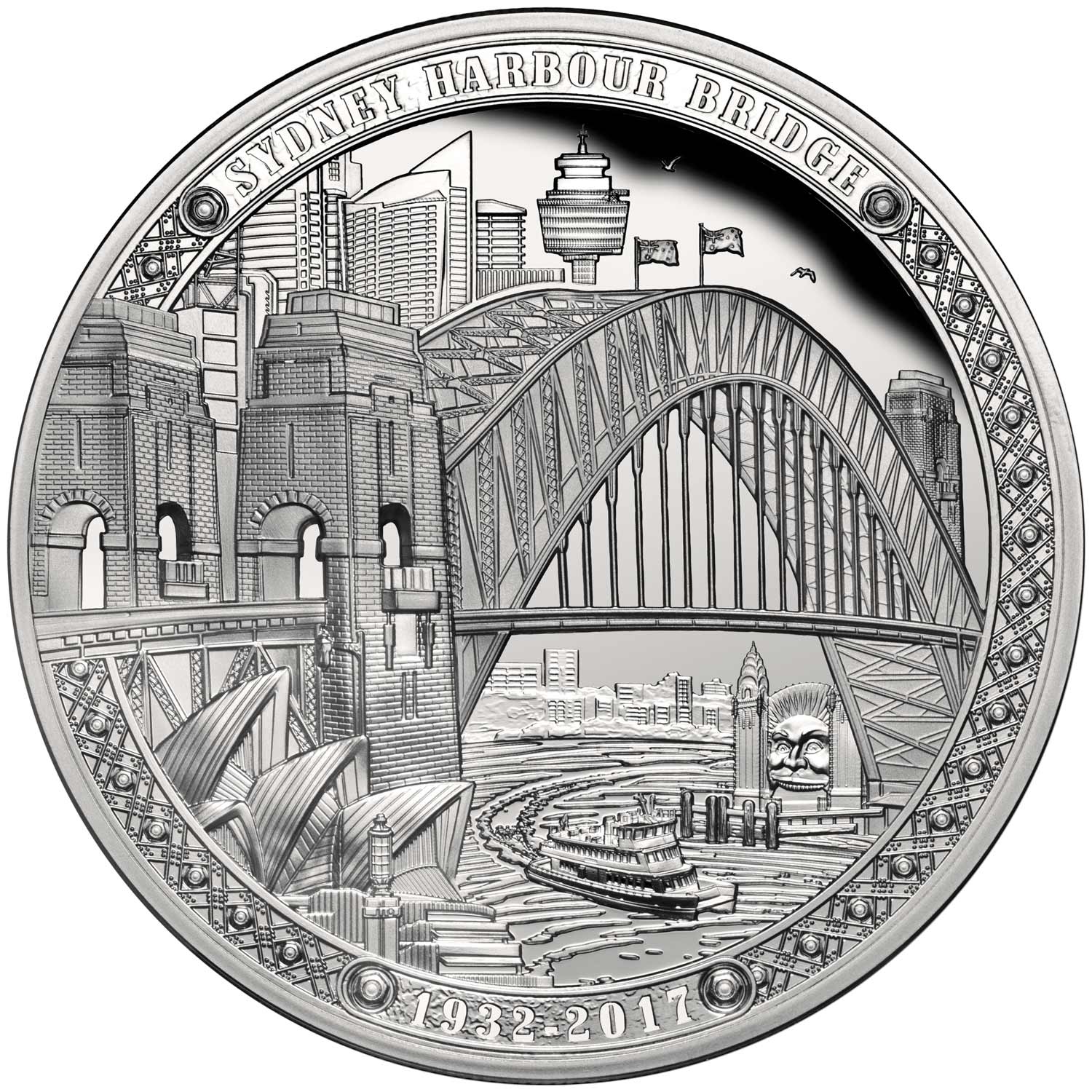
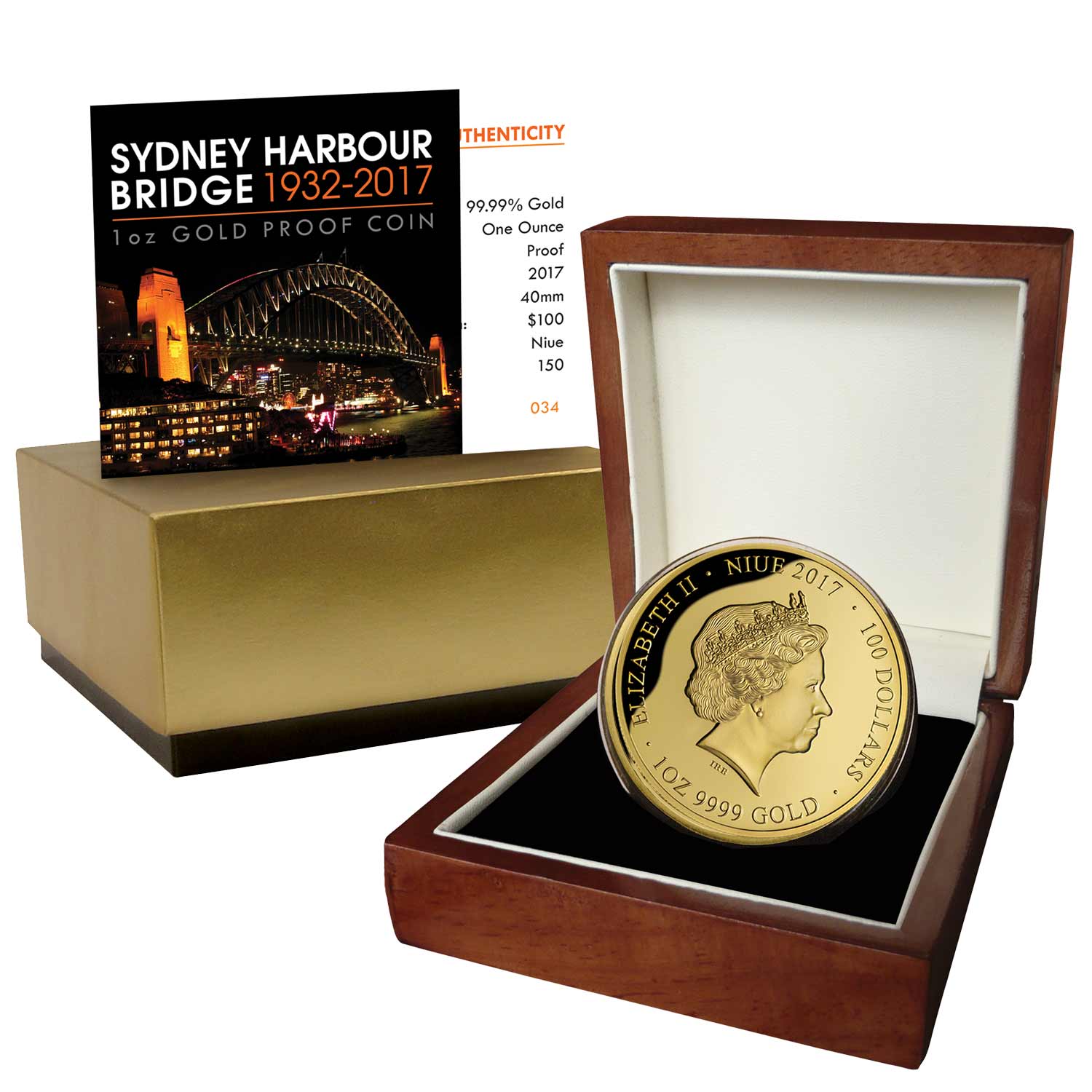

Leave A Comment